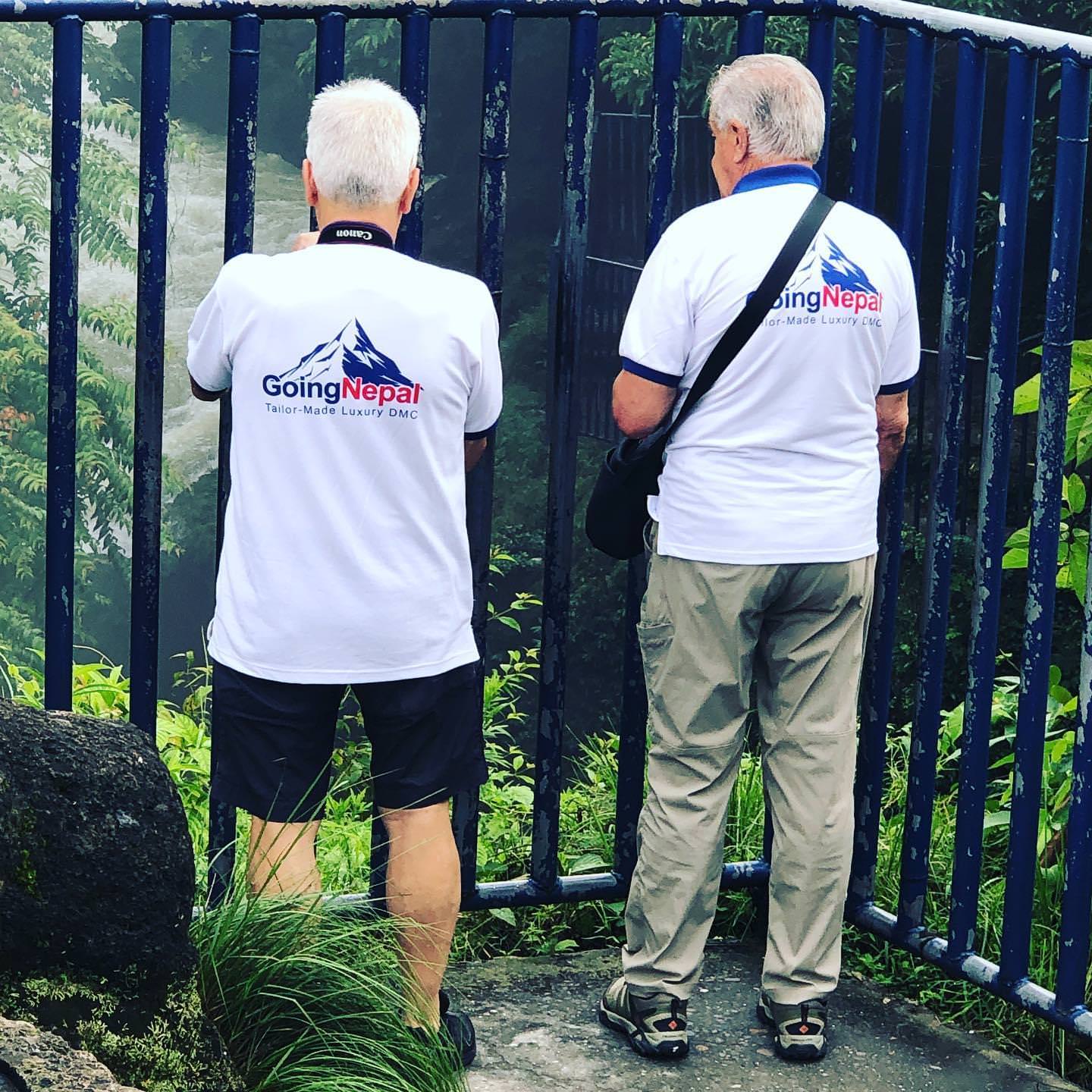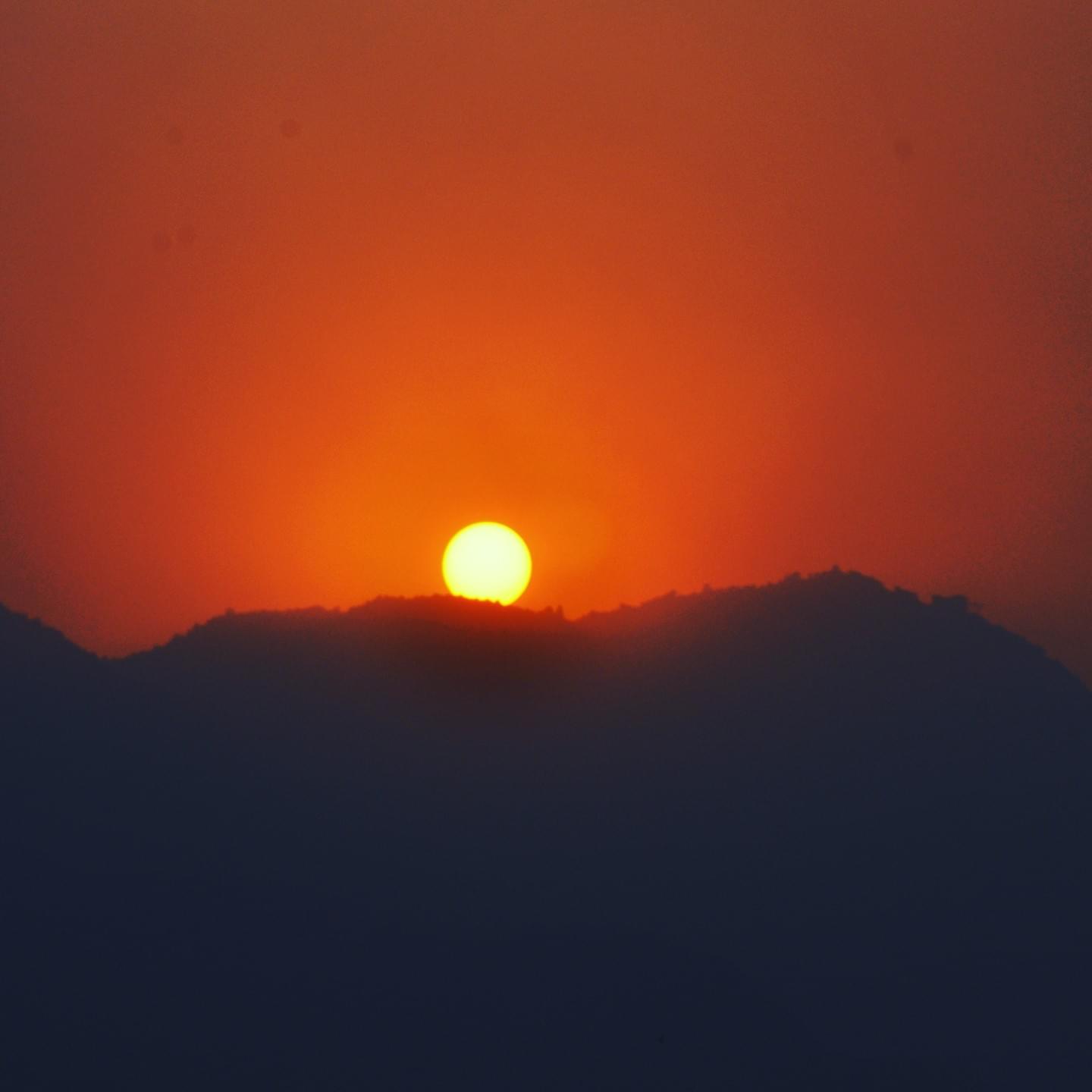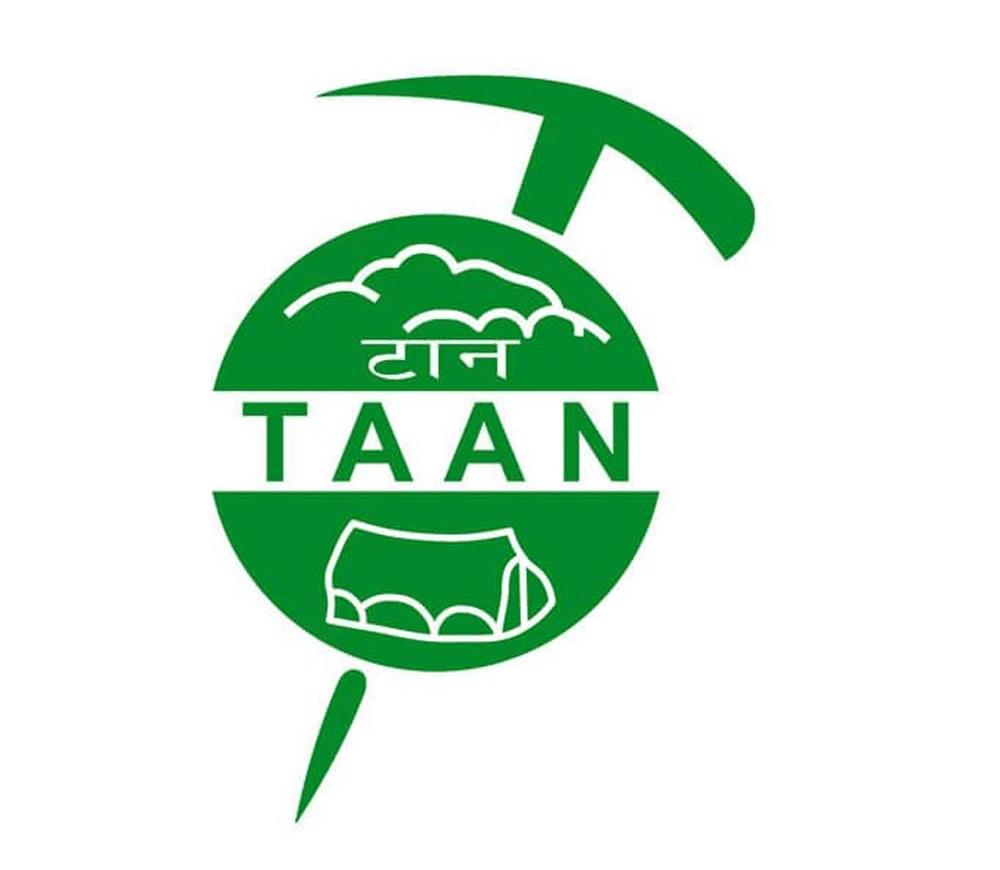The Most Beautiful National Parks, Conservation Ares, Wildlife Reserves, and Hunting Reserves in Nepal.
Nepal is known for its rich biodiversity and natural beauty, and the country has a number of protected areas that are dedicated to the conservation of its unique flora and fauna. These protected areas include:
- National Parks: There are 9 national parks in Nepal, including Chitwan National Park, Bardia National Park, Langtang National Park, Sagarmatha National Park, and Annapurna Conservation Area. These parks are designed to protect the country's unique ecosystems and wildlife, and they offer opportunities for wildlife viewing, trekking, and other outdoor activities.
- Conservation Areas: There are 6 conservation areas in Nepal, including the Kanchenjunga Conservation Area, the Makalu Barun Conservation Area, and the Manaslu Conservation Area. These areas are dedicated to the conservation of Nepal's unique natural and cultural heritage, and they offer opportunities for trekking, wildlife viewing, and cultural exploration.
- Wildlife Reserves: There are 4 wildlife reserves in Nepal, including the Royal Shuklaphanta Wildlife Reserve, the Koshi Tappu Wildlife Reserve, and the Parsa Wildlife Reserve. These reserves are dedicated to the conservation of Nepal's unique wildlife and their habitats, and they offer opportunities for wildlife viewing and birdwatching.
- Hunting Reserves: There are 4 hunting reserves in Nepal, including the Dhorpatan Hunting Reserve, the Koshi Tappu Wildlife Reserve, and the Banke National Park. These reserves are designated areas where hunting is allowed under certain conditions and regulations.
Conservation Area
Annapurna Conservation Area
The Annapurna Conservation Area (ACA) is located in central Nepal and is the largest protected area in the country. It covers an area of 7,629 square kilometers and spans the districts of Manang, Mustang, Kaski, Myagdi, and Lamjung.
The ACA is renowned for its natural beauty, including the majestic peaks of the Annapurna mountain range and the lush forests, rivers, and alpine meadows of the region. The area is also rich in cultural diversity, with several ethnic communities, including the Gurung, Thakali, and Manangi, calling the region home.
The ACA is home to a diverse range of flora and fauna, including several species of mammals, such as the snow leopard, musk deer, and Himalayan tahr, as well as a large number of bird species, including several species of high-altitude birds.
The ACA is an important trekking destination in Nepal and is popular among tourists who come to experience the natural beauty of the region and to trek to some of the most famous peaks in the Annapurna range, such as Annapurna South and Annapurna I. The ACA is also home to several important cultural sites, including the ancient city of Lo Manthang, the Muktinath Temple, and the Tilicho Lake.
Overall, the Annapurna Conservation Area is an important part of Nepal's conservation efforts and provides important habitats for a wide range of flora and fauna, as well as opportunities for tourists to experience the natural and cultural beauty of the region.
Api Nampa Conservation Area
The Api Nampa Conservation Area (ANCA) is a protected area located in the far western part of Nepal, covering an area of 1,959 square kilometers in the districts of Darchula and Bajhang. The conservation area is known for its stunning natural beauty, including the snow-capped peaks of the Api and Nampa mountains, as well as the lush forests, rivers, and alpine meadows of the region.
The ANCA is home to a diverse range of flora and fauna, including several species of mammals, such as the snow leopard, musk deer, and Himalayan black bear, as well as a large number of bird species, including several species of high-altitude birds.
The ANCA is an important trekking destination in Nepal and is popular among tourists who come to experience the natural beauty of the region and to trek to some of the famous peaks in the region, such as Api Peak and Nampa Peak. The ANCA is also home to several important cultural sites, including the ancient city of Karnali, the Jageshwar Temple, and the Dharchula Village.
Overall, the Api Nampa Conservation Area is an important part of Nepal's conservation efforts and provides important habitats for a wide range of flora and fauna, as well as opportunities for tourists to experience the natural and cultural beauty of the region.
Gaurishankar Conservation Area
The Gaurishankar Conservation Area (GCA) is a protected area located in the eastern part of Nepal, covering an area of 2,033 square kilometers in the districts of Dolakha and Ramechhap. The conservation area is known for its stunning natural beauty, including the snow-capped peaks of the Gaurishankar Mountain and its surrounding peaks, as well as the lush forests, rivers, and alpine meadows of the region.
The GCA is home to a diverse range of flora and fauna, including several species of mammals, such as the snow leopard, musk deer, and Himalayan tahr, as well as a large number of bird species, including several species of high-altitude birds.
The GCA is an important trekking destination in Nepal and is popular among tourists who come to experience the natural beauty of the region and to trek to some of the famous peaks in the region, such as Gaurishankar Mountain and Melungtse Peak. The GCA is also home to several important cultural sites, including the ancient city of Barabise, the Tamang Village, and the Helambu Village.
Overall, the Gaurishankar Conservation Area is an important part of Nepal's conservation efforts and provides important habitats for a wide range of flora and fauna, as well as opportunities for tourists to experience the natural and cultural beauty of the region.
Kanchenjunga Conservation Area
The Kanchenjunga Conservation Area (KCA) is a protected area located in the eastern part of Nepal, covering an area of 2,035 square kilometers in the districts of Taplejung, Panchthar, and Ilam. The conservation area is known for its stunning natural beauty, including the snow-capped peaks of the Kanchenjunga Mountain and its surrounding peaks, as well as the lush forests, rivers, and alpine meadows of the region.
The KCA is home to a diverse range of flora and fauna, including several species of mammals, such as the snow leopard, red panda, and Himalayan black bear, as well as a large number of bird species, including several species of high-altitude birds.
The KCA is an important trekking destination in Nepal and is popular among tourists who come to experience the natural beauty of the region and to trek to some of the famous peaks in the region, such as Kanchenjunga Mountain, Jannu Peak, and Yalung Glacier. The KCA is also home to several important cultural sites, including the ancient city of Taplejung, the Sherpa Village, and the Limbu Village.
Overall, the Kanchenjunga Conservation Area is an important part of Nepal's conservation efforts and provides important habitats for a wide range of flora and fauna, as well as opportunities for tourists to experience the natural and cultural beauty of the region.
The government of Nepal declared the Krishnasaar Conservation Area in 2009 covering an area of 15.95 sq. km in the Bardia district. This is the first organized effort to conserve the endangered Blackbuck (Antelope cervicapra cervicapra). Blackbuck is one of the protected species under the National Parks and Wildlife Conservation Act 1973 and is enlisted as endangered and listed under Appendix II of CITES. Blackbuck is primarily a grazer and prefers flat to slightly undulating terrain. The population in Khairapur was gone down to 9 in 1975 and due to persistent conservation efforts, the population reached 177 in 1990. Then again the population has declined gradually due to habitat loss and degradation and anthropogenic interferences. Now, the population of Blackbuck in Krishnasaar Conservation Area is more than 200. To protect the species, a guard post was established on site in 1975.
The Manaslu Conservation Area (MCA) is a protected area located in the western part of Nepal, covering an area of 1,663 square kilometers in the districts of Gorkha, Dhading, and Lamjung. The conservation area is named after the snow-capped peak of Mount Manaslu, which is the eighth tallest mountain in the world.
The MCA is known for its stunning natural beauty, including the rugged peaks of the Manaslu range, deep valleys, glaciers, and forests of rhododendron, oak, and pine. The region is also home to a diverse range of flora and fauna, including several species of mammals, such as the snow leopard, Himalayan black bear, and musk deer, as well as a large number of bird species, including several species of high-altitude birds.
The MCA is an important trekking destination in Nepal and is popular among tourists who come to experience the natural beauty of the region and to trek to some of the famous peaks in the region, such as Mount Manaslu, Tsum Valley, and the Larke Pass. The MCA is also home to several important cultural sites, including the ancient city of Barpak, the Gurung Village, and the Tibetian Village.
Overall, the Manaslu Conservation Area is an important part of Nepal's conservation efforts and provides important habitats for a wide range of flora and fauna, as well as opportunities for tourists to experience the natural and cultural beauty of the region.
National Parks
Chitwan National Park
The Chitwan National Park is the most famous wilderness National park in Nepal, as it's effectively open from both Kathmandu and Pokhara. Here, you can see every kind of birdlife, including gharial crocodiles, elephants, and the one-horned rhinoceros, of which there are more than 600. Chitwan has run an effective rhino rearing and protection program so you're nearly ensured to recognize no less than one when on a Jeep, bullock truck, or foot safari. Furthermore, on the off chance that you're genuinely fortunate, you might try and experience a Royal Bengal Tiger - a definitive award on any safari.
A Jeep safari of Chitwan National Park is remembered for Culture Trip's completely exhilarating Nepalese experience, on which you'll likewise boat across Phewa Lake, make momo dumplings at a Tibetan evacuee camp, and go wild setting up camp and wilderness boating along the Seti River.
Makalu Barun National Park
The Makalu Barun National Park is an eastern expansion of the Sagarmatha National Park, where Mount Everest is found. It's additionally associated with the Qomolangma National Nature Preserve in Tibet. The main safeguarded region on the planet has a rising gain of 8,000m (26,247ft) inside it. Mount Makalu - which sits inside the recreation area - is the fifth-most elevated top on the planet, at 8,463m (27,766ft). The Arun River goes through it and there's an exceptionally assorted assortment of widely varied vegetation in the tropical wilderness, forested slope, and frigid mountain scenes.
Shey Phoksundo National Park
The Shey Phoksundo National Park is in the far western locale of Dolpo and Mugu and a significant number of the more well-known outside of what might be expected trips in this district go through it. The greenish-blue Phoksundo Lake is the principal fascination. A significant part of the recreation area lies in the downpour shadow of the Himalayas - a dry and fruitless region on the edge of the Tibetan Plateau that has shocking mountain landscapes that extraordinarily diverge from that of the green lavish regions somewhere else in Nepal.
Bardia National Park
The Bardia National Park (additionally spelled Bardiya) is less habitually visited than Chitwan, as it's situated in far-off far-western Nepal. In any case, it provides you with a thought of what Chitwan would have once been like, before its uplifted prominence. This implies fewer sightseers, calmer hotels, and little in the middle among you and the imperial Bengal tiger. Indeed, this is the best spot in Nepal to visit for a brief look at the slippery huge feline and if sightings are positively not ensured, your odds are great. To arrive at Bardia, fly from Kathmandu or Pokhara to Bharatpur, then move to your convenience outside the recreation area. There are additionally transports from other Nepali urban communities assuming you're attached to self-discipline. If you're searching for more noteworthy undertakings, join a visit to Bardia with a Karnali River boating/kayaking trip, as these end close to the public park.
Sagarmatha National Park
The Sagarmatha National Park is where Mount Everest is located. Sagarmatha is the Nepali name for Everest - albeit the neighborhood Sherpa's name is Chomolungma. Yet, the mother of all mountains isn't the main fascination in this public park by quite far. Others incorporate captivating Sherpa culture in towns like Namche Bazaar and at far-off religious communities, uncommon untamed life, for example, the danphe - the public bird of Nepal - alongside the always famous Everest Base Camp trip and a few different tops above 6,000m (19,685ft) like Lhotse, Cho Oyu, Thamserku, Nuptse, Amadablam and Pumori.
Langtang National Park
The Langtang National Park is upper east of Kathmandu and is an incredible spot for journeying and partaking in the mountains and nature. It was one of the most terrible impacted districts during the 2015 quakes in Nepal, yet the foundation is being fixed and explorers are returning. Attractions incorporate perspectives on the Langtang Range, as well as mountains right over the boundary in Tibet, blossoming rhododendron backwoods in the spring, Tamang culture, and the high-height Gosainkunda Lake, which is a journey site.
Rara National Park
Rara National Park is a protected area located in the northwestern part of Nepal, covering an area of 106 square kilometers in the districts of Mugu and Jumla. The park was established in 1976 and was Nepal's first national park.
The Rara National Park is known for its stunning natural beauty, including the Rara Lake, which is the largest lake in Nepal and is surrounded by the majestic peaks of the Himalayas. The park is also home to a diverse range of flora and fauna, including several species of mammals, such as the musk deer, Himalayan black bear, and snow leopard, as well as a large number of bird species, including several species of high-altitude birds.
The Rara National Park is a popular trekking destination in Nepal, offering opportunities for trekking, birdwatching, and boating. The park is also an important eco-tourism destination and is considered to be one of the best places in Nepal to observe the unique flora and fauna of the region.
Overall, the Rara National Park is an important part of Nepal's conservation efforts and provides important habitats for a wide range of flora and fauna, as well as opportunities for tourists to experience the natural beauty of the region.
Banke National Park (BaNP) was established as 10th Park on the 12th of July 2010 which reflects the Government’s commitment to Biodiversity conservation at the landscape level. It was also recognized as a gift to the earth in 1998. The Park is linked with a transboundary Landscape that joins Suhelwa Wildlife Sanctuary in India through national and community forests towards the south. It joins with Bardia National Park (BNP) towards the west which further links with Katerniaghat Wildlife Sanctuary in India via the Khata corridor, national forest, and community forests. There are about 4,861 households with 35,712 populations residing in the buffer zone. Indigenous Tharu community, Brahmin, Chhetri, Magar, Tamang, Majhi, and Gurung are living in the buffer zone. 90% of the economy of people depends on agriculture and the rest 10% on trade and labor
Shukla Phanta National Park was managed as a hunting reserve at the beginning of in1969. It has been gazetted as a Wildlife Reserve in 1976 and as National Park currently (2017), covering an area of 305 sq. km. It lies in the extreme southwestern section of Nepal's Terai in the Kanchanpur District. The National Park shares a common boundary with the Indian state of Uttar Pradesh in the south and west which is formed by the Mahakali (Sarda)river, a major tributary of the Ganges. It is bordered on the eastern side by the Chaudhary River and to the north by a forest belt and cultivation. A total of 24 mammal species are recorded by Schaff (1978b), a total of 350 species of birds of which 180 are breeding species (Inskipp, 1989), Bhatt and Shrestha (1977) provide an annotated list of 14 species of fish, Schaaf (1978b) recorded 10 species of ectoparasites and biting flies. Although the area of the National Park is small, it supports a wide range of biodiversity which is nationally and globally important. The vegetation types primarily include sal forest, and sal savanna, which is part of a continuum between climax forest and grassland that is maintained by fire and floods. The National Park supports the largest population of Bengal florican Houbaropsis bengalensis. Read more...
Shivapuri Nagarjun National Park
Shivapuri Nagarjun National Park (159 sq km) is situated on the northern fringe of Kathmandu valley and lies about 12 km away from the center of the capital city. The area was gazetted as the country's ninth national park in 2002. Before its declaration as a national park, it was managed under the Shivapuri Watershed Development Board and was later declared as Shivapuri Watershed and Wildlife Reserve.
Khaptad National Park is located in the Far-western region of Nepal. The park was gazetted in 1984 covering an area of 225 sq. km. The area of a buffer zone is 216 sq. km. The park is the only mid-mountain national park in western Nepal, representing a unique and important ecosystem. The late Khaptad Swami moved to the area in the 1940s to meditate and worship. He spent about 50 years as a hermit and became a renowned spiritual saint.
Parsa National Park is located in the south-central lowland Terai of Nepal. With an area of 637.37 sq. km. it has a pristine sub-tropical jungle. In history, this area served as a vacation site for the Rana Rulers of the country. In 1984, it has been gazetted as a wildlife reserve to preserve the habitat for wild Asian elephants and a variety of other fauna. It is contiguous with Chitwan National Park in the west. In 2017 it was gazetted as National Park.
Wildlife Reserve
Koshi Tappu Wildlife Reserve
The Koshi Tappu Wildlife Reserve is a protected area located in the southeastern part of Nepal, covering an area of 175 square kilometers in the districts of Sunsari and Saptari. The reserve is named after the Koshi River and Tappu, a small island in the river.
The Koshi Tappu Wildlife Reserve is known for its rich biodiversity, including the endangered swamp deer (barasingha), wild buffalo (Arna), and a large number of migratory birds. The reserve is also an important habitat for several species of fish, reptiles, and mammals, including the Gangetic dolphin, gharial, and mugger crocodile.
The Koshi Tappu Wildlife Reserve is an important wetland area and is recognized as a Ramsar site, a wetland of international importance. The reserve is an important wintering ground for a large number of migratory birds, including several species of ducks, geese, storks, and cranes.
The Koshi Tappu Wildlife Reserve is a popular destination for nature lovers and birdwatchers, and offers opportunities for birdwatching, nature walks, and boating trips. The reserve is also an important eco-tourism destination and is considered to be one of the best places in Nepal to observe the unique flora and fauna of the region.
Overall, the Koshi Tappu Wildlife Reserve is an important part of Nepal's conservation efforts and provides important habitats for a wide range of flora and fauna, as well as opportunities for tourists to experience the natural beauty of the region.
Hunting Reserve
Dhorpatan Hunting Reserve
The Dhorpatan Hunting Reserve is a protected area located in the western part of Nepal, covering an area of 1,325 square kilometers in the districts of Myagdi, Baglung, and Rukum. The reserve is Nepal's only designated hunting reserve and was established in 1987 to conserve and manage the unique wildlife and vegetation of the region.
The Dhorpatan Hunting Reserve is known for its stunning natural beauty, including the rugged peaks of the Dhaulagiri and Annapurna ranges, deep valleys, forests, and grasslands. The region is also home to a diverse range of flora and fauna, including several species of mammals, such as the blue sheep, Himalayan tahr, and musk deer, as well as a large number of bird species, including several species of high-altitude birds.
The Dhorpatan Hunting Reserve is an important trekking and hunting destination in Nepal, offering opportunities for trekking, hunting, and birdwatching. Hunting is only allowed under special permits and is regulated by the government to ensure the sustainable management of the wildlife in the region.
Overall, the Dhorpatan Hunting Reserve is an important part of Nepal's conservation efforts and provides important habitats for a wide range of flora and fauna, as well as opportunities for tourists to experience the natural and cultural beauty of the region.




























